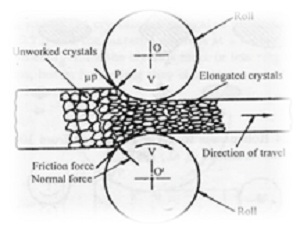Much of the bending/rolling process for curving structural steel can be understood by looking at the material’s mechanical properties by way of its stress strain behavior. Steel has 3 main mechanical properties: elastic, plastic & tensile. By looking at steel’s stress strain curve, one can gain a better understanding how a steel member will react to the bending/rolling process. A member behaves elastically when a stress is applied that does not strain the material past its elastic limit. Elastic deformation of a steel member is reversible and non-permanent. If a load is applied to a steel member being rolled/formed and the tonnage is too little, the member will deform underload but when the load is removed the member will return to the dimensions it had before the load was applied. The purpose of bending/rolling is to put a permanent change into the dimensions of the steel member. In order to curve or bend a structural steel member and permanently change the materials shape we must move past the elastic limits of the member being rolled and work within the material’s plastic range. Even more applied tonnage is required to act on a member plastically than was required for elastic deformation, this is called “yield stress”. When a large enough load is applied to a member, elastic deformation first occurs but the yield stress applied is great enough to further strain the material and plastic deformation occurs. When the stress/load is removed, the material does not return to its previous original dimensions but rather retains the strain caused by the applied load. In this range of the steel’s stress/strain curve what is known as strain hardening occurs. Strain hardening or work hardening actually strengthens the material. This is due to the elongation or dislocation of the member’s granular or crystalline structure. This is to extremes, but to understand what metallurgical changes occur during work hardening of the material, you can ultimately think of curving/forming steel like the cold rolling process. Thicker material is passed through rollers that work the material with high pressure forces, much like a rolling pin in the kitchen. When this is done the crystalline structure of the material gets deformed and realigned. The granular structure gets elongated in the direction of the roll, increasing the yield strength of the member.

Apply even more stress on a structural steel member during the bending/rolling process and you may experience a failure of the material. Taking a member past its ultimate strength will cause the structural steel member to neck down and ultimately fracture. This is obviously undesirable for any structural steel member being rolled. Bender/Rollers must be aware of the member’s Stress/Strain relationships and what affects a member’s elastic and plastic limits have on the bending rolling process.
Chicago Metal Rolled Products has been curving steel and other metals for over 100 years. We are happy to provided our steel bending services for your next project. Contact us today.







